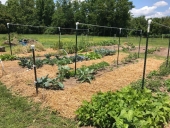
 1
1








we don't have a problem with lack of water we have a problem with mismanagement
beavers the original permies farmers
If there is no one around to smell you ,do you really stink!
 1
1








we don't have a problem with lack of water we have a problem with mismanagement
beavers the original permies farmers
If there is no one around to smell you ,do you really stink!




we don't have a problem with lack of water we have a problem with mismanagement
beavers the original permies farmers
If there is no one around to smell you ,do you really stink!
 1
1




you do want something with deep roots but your main soil building and water retention will lay in what is left on top




 1
1











 2
2








we don't have a problem with lack of water we have a problem with mismanagement
beavers the original permies farmers
If there is no one around to smell you ,do you really stink!




 1
1




Clay, shade, neighbor’s Norway maples.....we’ll work it out.

|
Brace yourself while corporate america tries to sell us its things. Some day they will chill and use tiny ads.
The new gardening playing cards kickstarter is now live!
https://www.kickstarter.com/projects/paulwheaton/garden-cards
|




